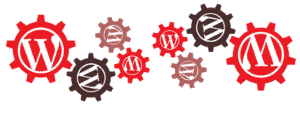Implementing automatic internal linking in WordPress optimizes sites for search engines and enhances user engagement. By generating relevant links, it improves content discoverability, reduces bounce rates, and boosts SEO rankings. Using specific tools with customization options ensures a unified experience. Key steps include database sharing, installing plugins, configuring settings, and tracking success through analytics to refine strategies based on user behavior insights. "How to use automatic internal linking" guides ensure effective interlinking for better site performance.
In today’s digital landscape, efficient content management is key. For WordPress users, implementing automatic internal linking can revolutionize website navigation. This article guides you through the process, from understanding the basics of this powerful feature to choosing the right software and setting up your system seamlessly. We explore the numerous benefits, including improved SEO and enhanced user experience. By the end, you’ll know how to optimize and track your internal link structure for maximum success.
- Understanding Automatic Internal Linking: A Basic Overview
- Benefits of Implementing Automated Internal Links in WordPress
- Choosing the Right Software for Seamless Integration
- Setting Up Your System: Step-by-Step Guide
- Optimizing and Customizing Your Internal Link Structure
- Measuring Success: Tracking and Analyzing Results
Understanding Automatic Internal Linking: A Basic Overview

Understanding Automatic Internal Linking is key to optimizing your WordPress sites for better search engine visibility and user engagement. This powerful feature automatically generates links between relevant pages on your site, promoting content discovery and improving SEO. When you create or update a post, WordPress scans your existing content and suggests internal links based on keywords, titles, and other contextual factors.
This process not only saves writers time but also ensures that each page has the potential to connect with related content, fostering a more interconnected site architecture. Whether you’re looking for an automatic internal linking strategy or tips to enhance your tutorial on how to use this feature, leveraging WordPress’s built-in functionality can significantly streamline your workflow and boost your site’s overall performance.
Benefits of Implementing Automated Internal Links in WordPress

Implementing automated internal links in WordPress brings numerous advantages for users looking to enhance their website’s performance and search engine optimization (SEO). One of the key benefits is improved user experience; automatically generated links ensure that visitors can effortlessly navigate through related content, reducing bounce rates and increasing time spent on site. This seamless navigation encourages exploration, fostering a deeper connection with your audience.
Moreover, automatic internal linking tips can significantly boost SEO efforts. By strategically placing relevant links within content, you enhance the site’s crawlability, allowing search engines to understand the context and hierarchy of your pages. This leads to better keyword ranking, as search algorithms recognize the value of interconnected topics. An automatic internal linking tutorial might guide users through setting up these links, demonstrating how to use them effectively to create a powerful, interlinked network that benefits both users and search engines alike.
Choosing the Right Software for Seamless Integration

When selecting software for implementing efficient automatic internal linking across multiple WordPress sites, it’s crucial to align your choice with your site’s unique needs and goals. Not all tools are created equal, so understanding your requirements beforehand is key. Look for a solution that offers seamless integration with your existing WordPress setup, ensuring smooth data transfer and minimal disruption during the implementation process.
An ideal automatic internal linking strategy should provide an intuitive interface, advanced algorithms for accurate link generation, and customization options to tailor the links to your brand voice. Incorporating these features will result in a more unified user experience across all your WordPress sites while optimizing your content’s discoverability and search engine visibility.
Setting Up Your System: Step-by-Step Guide

Setting up an efficient automatic internal linking strategy for your WordPress sites is a straightforward process when followed step-by-step. Begin by ensuring all your sites are connected via a shared database or network, allowing communication between them. This initial setup is crucial for enabling seamless data exchange and consistent internal linking.
Next, install a reliable plugin designed for automatic internal linking SEO. These plugins offer an intuitive interface to configure settings, such as keyword matching and link placement. Follow the plugin’s instructions to define your automatic internal linking optimization preferences, including target anchor text and link depth. Once configured, these tools automatically generate links based on content similarity across your sites, enhancing user experience and boosting search engine visibility through strategic interlinking.
Optimizing and Customizing Your Internal Link Structure

Optimizing your internal link structure is a crucial step to enhance user experience and search engine visibility. By utilizing automatic internal linking tools, you can efficiently manage and customize links across your WordPress sites. These tools provide an intuitive interface to identify relevant content within your site, suggesting strategic placement of internal links. This process ensures that each page has a clear hierarchy, guiding users through a logical journey while improving website navigation.
In the world of WordPress optimization, automatic internal linking tutorial guides can be invaluable. The tips and tricks shared in these tutorials often include strategies for optimizing link anchor text, ensuring each click provides value to your audience. Through careful consideration of automatic internal linking optimization techniques, you can create a seamless user experience, reduce bounce rates, and increase the overall performance of your WordPress sites.
Measuring Success: Tracking and Analyzing Results

Measuring success is a vital aspect of implementing any software solution, and when it comes to automatic internal linking in WordPress, tracking and analyzing results can provide valuable insights. By utilizing analytics tools, website owners can gauge the effectiveness of their automated internal linking strategy. One key metric to monitor is the increase in organic traffic as a result of improved site navigation. This can be achieved by identifying which pages are gaining more visitors and understanding the user behavior on those pages. For instance, an automatic internal linking tutorial might reveal that certain related posts are being linked to frequently, enhancing user engagement.
Additionally, monitoring changes in bounce rate and average session duration can offer further automatic internal linking tips. If these metrics show a positive trend, it indicates that users are finding relevant content within the website, leading to longer stays and reduced bounce rates. Such insights empower WordPress site administrators to refine their content strategy and optimize internal linking for improved SEO, ensuring each link contributes to a richer user experience while boosting search engine rankings.
